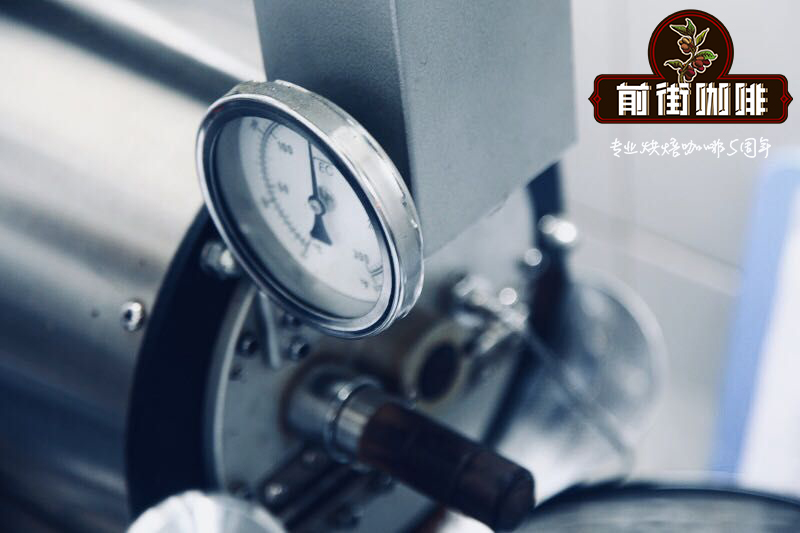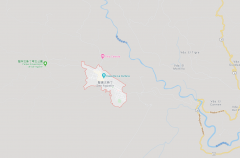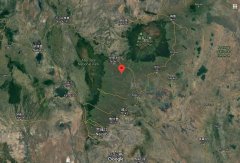Several common mistakes in roasting coffee beans | how to avoid unstable factors when roasting coffee

Coffee roasting plant procedures are inevitably wrong, whether human or equipment problems are possible. The good news is that there are ways to limit, mitigate or even avoid these problems altogether.
Understanding these errors helps optimize procedures and take preventive measures to help maximize the potential of your raw beans.
In this article, let's look at common mistakes made in baking beans and how to avoid them.
Mistake 1: Using an inexperienced bean baker
The most important thing about any skill is the accumulation of experience, and coffee roasting is no exception. Rob Bathe, owner of Folly Coffee Roasters, said: "One common trend we're seeing is that coffee shops routinely start roasting beans with inexperienced roasters. The customers are unlucky because they pay expert fees and get coffee made by people who are unfamiliar with roasting beans."
Without an adequate knowledge base of roasting beans, the coffee may be below par. Customers are not satisfied, and it has a negative impact on the brand, and it may also expose expensive bean baking equipment to the risk of damage due to unfamiliar operation.
If you are going to start baking beans, take some time to check out a new baking farm. Use all available resources to hire experienced roasters, even if only to mentor your staff, to ensure that customers get quality coffee. In this way, the company can obtain good credit and it is possible to improve sales performance.
Mistake 2: Distraction
The baker may be preparing the next batch of beans, concentrating on the packaging, or sliding his hand until he loses track of time, all of which may distract him from the task at hand.
Paying attention to changes in coffee beans is the first task of the roaster. If it is really necessary to do something else at the same time, it is best not to be too heavy, eliminate potential factors that may cause errors, remove mobile phones, turn off unnecessary windows on computers, etc. With a little more attention, you can improve baking quality, reduce green bean loss, etc.
For larger companies, it is the responsibility of managers to avoid rushing each pot of beans and allow enough time for the roaster to finish his work. Given the existing equipment and personnel, the coffee shop can only produce a small amount of coffee. Knowing this and allowing a certain buffer time can prevent employees from being overwhelmed, resulting in a more stable and higher-quality coffee.
Error 3: Boiler preheating is not accurate
Experienced bean roasters know that the first pot of coffee each day is the most challenging, and the bean dryer needs to be raised to a certain temperature. Scott Rao, author of The Coffee Roaster's Companion, said: "Every roaster I've ever met admits that the quality of the first few batches of coffee roasted each day is difficult to stabilize, and this is usually caused by the fact that the roaster is not properly preheated."
During warm-up, it is important to fully understand your machine. Although the temperature detector can quickly read the correct temperature, this temperature does not take into account the thermal energy of the entire baked chicken. A rush to preheat causes the heat to drop below the baker's expectations, and the need for additional heat after cooling causes the overall baking time to lengthen, which will change the overall baking configuration of the pan.
There are several ways to ensure a more complete preheat. You can heat the bean dryer to a temperature higher than the preset temperature and let it cool several times before baking the first pan. The machine can then be left idle for 15 to 20 minutes above the preset temperature and then cooled down to the preset temperature.
Whatever technique you use, don't heat the dryer in a hurry, or it will affect the quality of the coffee you bake.
Mistake 4: There is no standard procedure (BBP) for changing pan to bake beans
To achieve consistency in coffee roasting quality, roasters must be aware of all variables in order to control the results and standardize the roasting process.
The author interviewed Dudley Powell, the bean baker at Horsham Coffee Roaster, who said: "At Horsham Coffee Roaster, we are committed to implementing our batch processing procedures (BBP) and ensuring that our bean baking process is consistent in terms of stability and filling temperature correctness."
BBP is important for the stability of the baked beans and to reduce baking defects. If the drum temperature is too high, the next batch of beans may be burnt when entering the dryer. If the drum temperature drops too much, it takes longer to reach a pop, causing the flavor of the next batch of roasted coffee to change. A stable BBP is the key to stabilizing baked beans and reducing blemishes.
Mistake 5: Bake without Cup Test
A stable quality control system must be constantly adjusted and calibrated with cup tests, which can check not only a specific batch of coffee roasted, but also many more items.
According to Jeff Mooney of Folly Coffee Roasters,"The cup measures the batch that you are most satisfied with, and then compares it to other coffees, noting the differences between them and whether they are good or bad, and adjusting the roasting process or the configuration of the green beans."
The cup test is important to confirm the roasting process, but you can also set up a "calibration cup" to check whether your coffee is in line with your expectations or suggested methods, and your entire roasting vision.
Mistake 6: complacency
According to Rob,"The bigger the baking plant, the more likely it is to fall into routine, success leads to complacency, which slowly erodes customer trust, and even if you can run a certain baking technique well for years, it doesn't mean there's no room for growth." Questioning things and reviewing the process will keep you producing quality coffee."
In order to be the best baker, you must also know the news of the industry, access information through various platforms, and continuously learn and improve your skills. All these can be done with a lot of effort.
Dudley said: "We collect information from all over the world to help us solve problems, whether it's reading blogs, reading blogs or listening to lectures from industry elders, or talking to other industry players, and being active on the Internet in various forms."
Mistake 7: Filling too much or too little raw beans
Understanding the equipment you use and its functions requires accumulated experience, among which understanding the load of the bean dryer is very important.
A common mistake made by novice roasters is not understanding the load of the dryer. If too many beans are loaded in the same pot, the roasting time may be prolonged, resulting in a roasted taste or a plain coffee.
If the dryer is loaded with too little green beans, it will be difficult to control the fire, making the green beans more sensitive to heat, which will reduce the weight of the coffee beans and cause the temperature probe to read incorrectly.
Mistake 8: Maintenance of the bean dryer
The purchase of a bean dryer is a major investment, and if the dryer is not properly maintained, it will shorten the service life of the equipment and affect the quality of the coffee. The oil produced by the roasted coffee will deteriorate and sour. The exhaust gas generated during the roasting may also interfere with the roasting, and the roasted coffee will be affected due to poor ventilation.
There are many difficulties in operating a poorly cleaned bean dryer. Accumulated oil will not only affect power, but also make the machine prone to failure. With the accumulation of dirt in the ventilation duct, it will also reduce the airflow. More seriously, the bean dryer and the ventilation system will accumulate combustible substances and cause fires.
When roasting coffee in batches (especially lighter roasts), using dirty equipment for roasting is likely to result in negative flavors.
Schedule a cleaning schedule according to the bean dryer manufacturer's recommendations and thoroughly implement cleaning procedures.
Mistake 9: Not handling baking defects
Often you will find coffee beans that are defective due to defects in the green beans themselves, or roasting errors, although this is not the focus of this article, but it is necessary to mention them.
Sam Kayser, owner of Lone Oak Coffee Co. , explains baking defects: "In my experience, some common mistakes can be: burnt edges, burnt, baked taste, incomplete development. These specific problems occur during the roasting process…If any kind of defect occurs, the coffee itself will lose its flavor. If this mistake is made, the coffee will have a distinct negative taste of ash, charred, woody, raw or grassy. With proper staff training and experience accumulation, proper recipe configuration and strict quality control, most baking defects will be resolved."
Step-by-step organization of the baking process
1. Correct application of heat source in early baking of beans
It is important to use heat properly in the early stages of roasting, which, according to Scott Rao, is essential for obtaining the best flavor and development of coffee roasting.
This does not mean putting green coffee beans into a drum preheated to an ultra-high temperature, as this may result in burnt or fringe-burnt defective beans, but rather preheating the dryer to a preset temperature, loading the beans, and then maintaining the heat high enough to achieve a burst in a reasonable time.
Coffee beans develop after the first explosion, so extending the roasting time before the first explosion does not help the flavor development, but only prolongs the overall roasting time, resulting in a plain and baked coffee.
2. Use the flavor development stages of baking
A common problem Dudley noticed was that many people served beans before flavor development, and the roasting method was still popular, probably because more people were roasting beans themselves, which was a good thing, but it did allow some people to roast light roast coffee before flavor development.
Underdeveloped roasting is caused by dropping beans too quickly after the first explosion, which can give coffee a raw, grassy, somewhat peanut-like taste. Light roast coffee can be manipulated by slowing down the heating rate after the first explosion if it has enough time to develop and avoid unpleasant tastes.
Stop heating and increase air flow after the first explosion to extend the time between the first explosion and the second explosion, so that the beans have more time to develop without necessarily baking to a deep degree. The exact timing depends on the machine and batch size. With a little experimentation and cup testing, you can find the best roasting method for light roast coffee.
Roasting beans is an art, and the creativity of blending formula beans, as well as subtle adjustments in the roasting process, can produce very different coffee. This is why this work is exciting. Use the above suggestions to improve the quality of your roast and experiment with adjustments. I believe that people who drink your coffee will feel the improvement in quality!
Important Notice :
前街咖啡 FrontStreet Coffee has moved to new addredd:
FrontStreet Coffee Address: 315,Donghua East Road,GuangZhou
Tel:020 38364473
- Prev

Qingxin Manor, Villa Province, Colombia introduces Colors of Nature
Buenos Aires Farm Buenos Aires Farm is located in the town of St. Augustine, south of Huila. The owner, Miguel Angel Botina, 43, bought the land only five years ago and began growing coffee with his wife Doria Emilila Diz. The manor is as high as 1790 meters above sea level, with a temperature difference between day and night
- Next

Kenya Camugani processing Plant introduces the characteristics of Kenyan SL28 and SL34 coffee beans
Features of the Camugani processing Plant the Camugani processing Plant (Ruthaka Kamuchuni) is located in central Kenya, between the Aberdare Mountains and the Kenyan Mountains, at an altitude of about 1650-1700 meters, about 100km to the southwest to the capital Nairobi. Camugani treatment plant was established in 1987, under the Ruthaka FCS cooperative system, Zhou
Related
- Beginners will see the "Coffee pull flower" guide!
- What is the difference between ice blog purified milk and ordinary milk coffee?
- Why is the Philippines the largest producer of crops in Liberia?
- For coffee extraction, should the fine powder be retained?
- How does extracted espresso fill pressed powder? How much strength does it take to press the powder?
- How to make jasmine cold extract coffee? Is the jasmine + latte good?
- Will this little toy really make the coffee taste better? How does Lily Drip affect coffee extraction?
- Will the action of slapping the filter cup also affect coffee extraction?
- What's the difference between powder-to-water ratio and powder-to-liquid ratio?
- What is the Ethiopian local species? What does it have to do with Heirloom native species?

